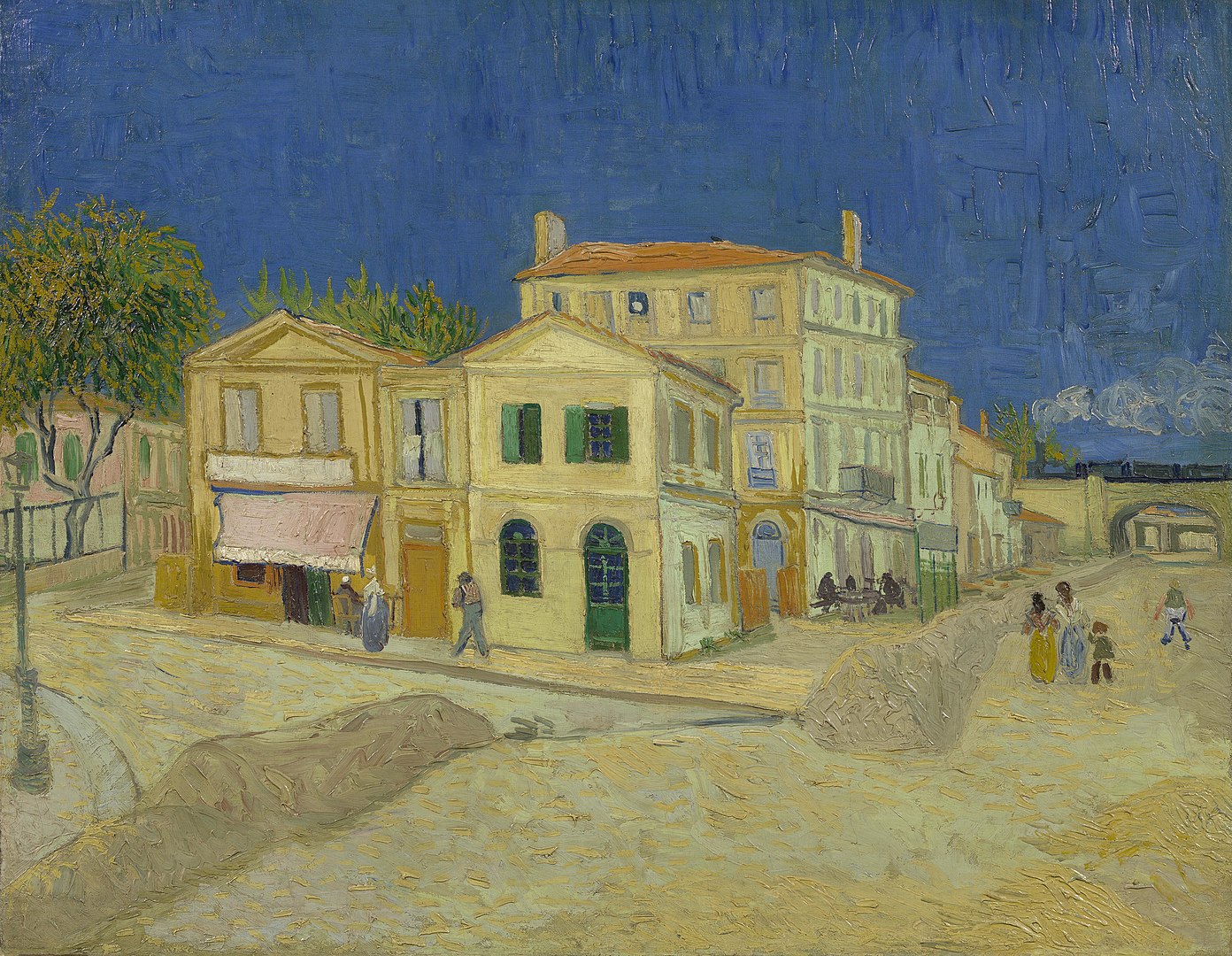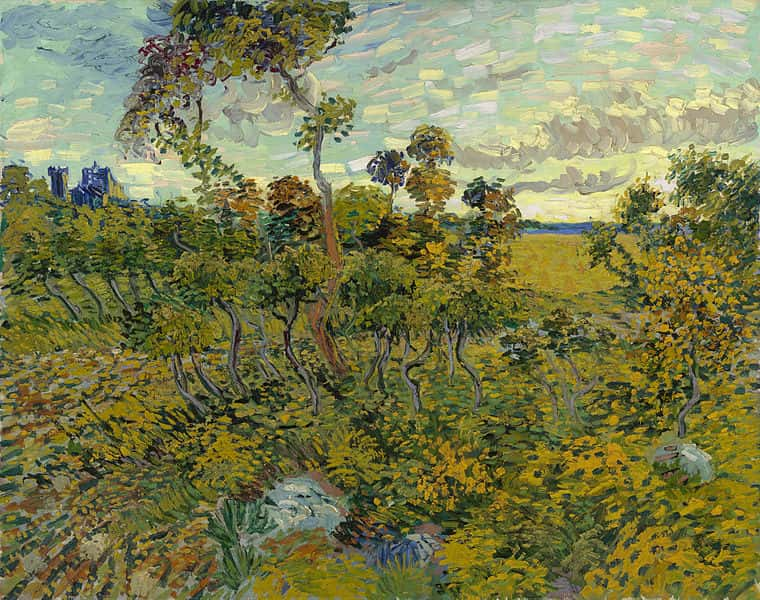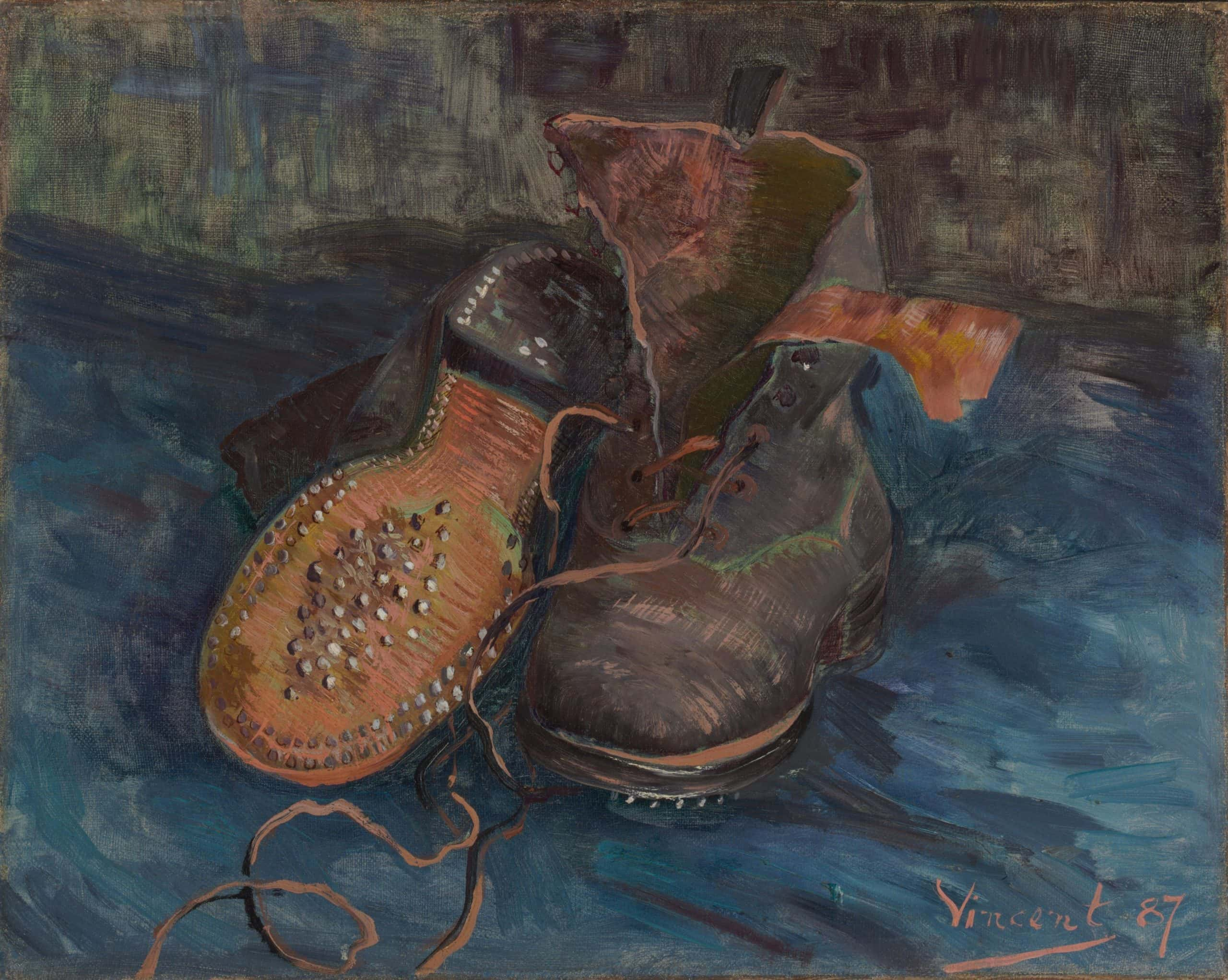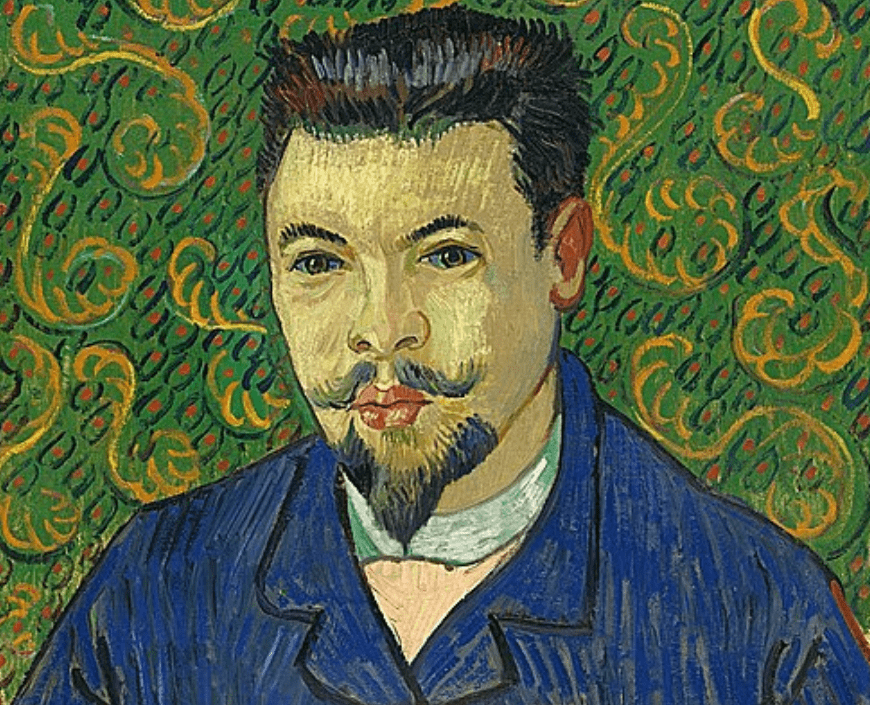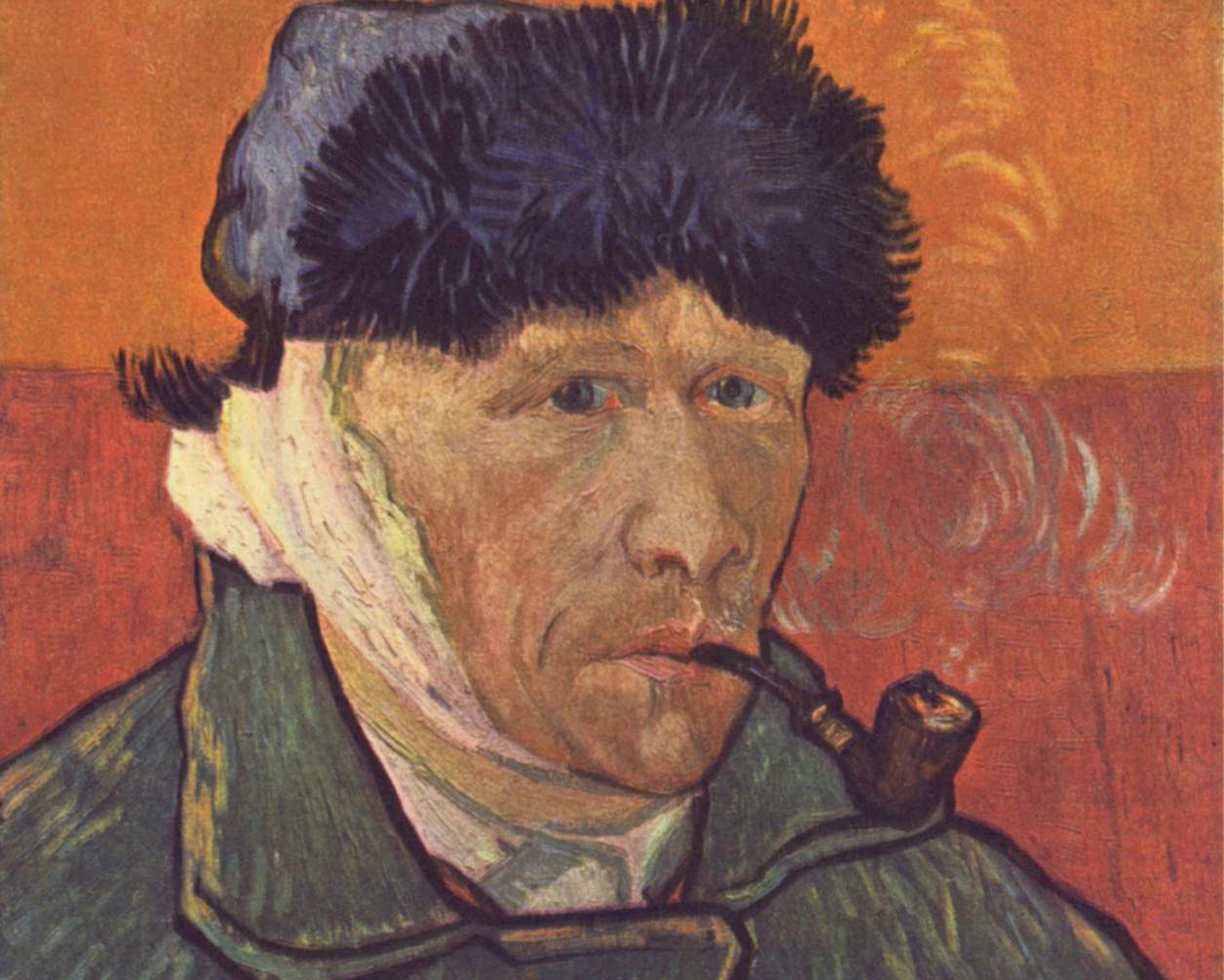19th-century Dutch painter Vincent Van Gogh is one of the best-known and most-celebrated artists in the world. His use of vivid colors and his expressive brushstroke technique place him as among the most unique and influential painters in the history of Western art. Van Gogh’s life was not without its trials, as he suffered from lifelong mental illness, lived much of his adult existence in grim poverty, and experienced no popular success during his lifetime. Here are 42 colorful facts about Vincent Van Gogh.
Vincent Van Gogh Facts
1. Prolific Painter
Van Gogh is one of the most prolific painters of all time. Despite only beginning to paint in his late 20s and producing the majority of his work during the final two years of his life, Van Gogh produced an amazing 900 paintings in a 10-year career.
2. Finders Keeps
Enterprising art thieves should be aware that a loophole in Dutch law states that if a thief steals a Van Gogh masterpiece, they need only wait twenty to thirty years with the stashed masterpiece before it becomes legally the thief’s property. The Netherlands is the only jurisdiction in the world where this odd legal rules applies to pieces of art.
3. Starry Night
One of Van Gogh’s most famous paintings, “Starry Night” was painted during the artist’s stint in a French insane asylum, while he was suffering from a psychotic episode.
4. Dynamic Painting
“Starry Night” is significant not just as one the world’s most iconic paintings, but also in the way it uniquely portrays one the most difficult subjects in the field of fluid dynamics: turbulence. In 2004, astronomers using the Hubble Space Telescope observed eddies of dust and gas around a star which reminded them of Van Gogh’s “Starry Night.” After studying the painting in detail, they discovered that Van Gogh had depicted what is called turbulent fluid structures in his paintings in a way that very accurately captured the ways light moves.
 Flickr, Hubble Space Telescope
Flickr, Hubble Space Telescope
5. Secret Provenance
In 1908, a Norwegian industrialist bought what he believed to be a Van Gogh landscape painting entitled “Sunset at Montmajour.” He proudly displayed it at his home, until the French Ambassador to Sweden visited him and informed him that it probably wasn’t a real Van Gogh, after which the industrialist ashamedly placed it in the home’s attic. The painting wasn’t rediscovered until the 1990s, after which a lengthy investigation concluded in 2013 that the work was by Van Gogh, after all.
6. Great Dutchman
In 2004, Van Gogh was named the 10th greatest Dutch person, behind such famous individuals as Anne Frank, Rembrandt and William of Orange.
7. Bibliophile
Van Gogh worked as a librarian at some point in his life. It’s said that the cantankerous artist would sit in a corner wearing his top hat and laboriously translate the Bible into four languages: Dutch, German, English, and French.
8. These Boots Were Made for Walking
Van Gogh was a lifelong walker, often hiking extremely long distances in very short periods of time. It is reported that he once walked over 100 miles in 3 days—a distance of almost four marathons—in a journey to visit his sister in Ramsgate, England. It is unsurprising then, that Van Gogh decided to immortalize his rather tattered boots in a painting.
9. Sounds Like a Fire Hazard
Van Gogh actually has two paintings named “Starry Night,” and the first, less iconic one, is referred to as “Starry Night 1.” He painted the first one in Arles at nighttime, and to get enough light to paint what he was seeing, Van Gogh put candles in his straw hat.

Sign up to our newsletter.
History’s most fascinating stories and darkest secrets, delivered to your inbox daily. Making distraction rewarding since 2017.
10. Not Everyone Was a Fan
Van Gogh painted a portrait of the doctor who treated him after the painter had famously cut off his own ear. The painting, “Portrait of Dr. Felix Rey,” was given to Dr. Rey, who was reportedly not very fond of it. The doctor later used the painting to repair a chicken coop and then gave it away. The portrait is now estimated to be worth $50 million. You can’t please everyone!
11. First Name Basis
Van Gogh signed his completed paintings by scrawling just his first name: “Vincent.” He did this because he was annoyed at how Non-Dutch speakers always incorrectly pronounced Van Gogh. It’s not “Van Go” or “Van Goff,” it’s more like a guttural “Van Hogh” with an intonation that is hard for English speakers to properly reproduce.
12. My Brother’s Keeper
Van Gogh’s younger brother, Theo, supported him by providing significant financial support, which helped the struggling painter maintain a career as an artist. Theo also provided much needed emotional support to Vincent, who had long suffered from mental health issues.
 Vincent & Theo (1990), Belbo Films
Vincent & Theo (1990), Belbo Films
13. Sibling Support
Vincent’s brother Theo was also a very successful art dealer who helped to introduce important works of French and Dutch art to the general public and the world. Theo was instrumental in advancing the careers of Impressionist painters like Claude Monet and Edgar Degas by pressuring his employer to buy and exhibit their works. Theo also used his connections in the art world to introduce his brother to a number of significant artists, including Paul Gaugin, Paul Cezanne, Henri de Toulouse-Lautrec, and Georges Seurat.
14. Whistling Past the Graveyard
Van Gogh grew up in the small town of Zundert, Netherlands. While growing up, Van Gogh often walked by the town’s graveyard containing a gravestone with his own name on it—where the painter’s older brother who had died as an infant had been laid to rest. The painter was born exactly one year to the day after his older brother.
15. Place in History
In 1980, a French woman by the name of Marcelle Roulin passed away. What’s notable about her death is that in 1888, she was the subject of five paintings by Van Gogh, who had painted Roulin as a four-month-old baby girl.
16. Eternity's Gate
One of Van Gogh’s final paintings entitled “At Eternity’s Gate” portrays an old man sitting in a chair, slumped over and despondently cradling his face in his hands. The painting was created approximately two months before Van Gogh’s apparent suicide, in a period when he was recovering from a significant decline in his health. One art historian says an examination of this piece and others produced around this time display unmistakable signs of his depression and mental collapse that were otherwise rare in his work.
17. Japanese Influence
Van Gogh was strongly influenced by Japanese woodblock prints called ukiyo-e, later dealing in them with his brother Theo. He made three copies of these woodblock prints and later stated that “All my work is based to some extent on Japanese art.”
18. Painted Over
Some of Van Gogh’s later paintings were painted over his earlier works. We know this because of the use of X-ray technology, which discovered a portrait of a Dutch peasant woman underneath a later painting titled “Patch of Grass.” It is believed that he did this in order to re-use the canvas, which was expensive.
19. Pulling Wool In Front of His Eyes
Van Gogh is famous for his use of vivid, contrasting colors and tones. To test different color combinations, Van Gogh would have with him by the easel a box of colored balls of wool that he would set next to each other to get a feel for color combinations before trying them out with his expensive oil paints.
20. Improvised Brilliance
One day in August 1888, Van Gogh planned to paint a series of portraits, but the models he had hired failed to show up. Instead, he improvised by arranging some full bloom Provençal sunflowers in a locally made earthenware pot. In less than a week, he had painted four paintings of the sunflowers—two of which have become some of the most famous paintings ever produced by the great artist.
21. Sunflowers, Not Bombs
One of the sunflower paintings was destroyed during a World War II American bombing raid on Ashiya, Japan, on the same day as the dropping of the atomic bomb on Hiroshima. The painting was owned by a Japanese businessman and art collector, who attempted to save the painting as fire engulfed his home, but was unable to retrieve it as the large, gilded frame was too heavy.
22. Bad Getaway
In 1991, 20 Van Gogh paintings were stolen from the Van Gogh Museum in the Netherlands. The thieves were thwarted, however, within 35 minutes of making their escape, after their getaway vehicle got a flat tire and they were forced to abandon the paintings in their car and flee on foot! All four thieves were later arrested, including a security guard at the museum.
23. Hypergraphia
Van Gogh was both a prodigious writer as well as a painter, having composed 200 letters in his short life, the briefest of which is over six pages. Experts believe that Van Gogh suffered from a condition called hypergraphia, characterized by compulsive writing or production of other graphic materials.
 Vincent & Theo (1990), Belbo Films
Vincent & Theo (1990), Belbo Films
24. Absinthe Other Causes
Van Gogh was a notorious drinker of absinthe, a highly alcoholic, anise-flavored spirit that was very popular in the 19th century. Some believe that Van Gogh’s frequent absinthe consumption exacerbated his struggles with mental illness and led to the hallucinations that ended in Van Gogh’s suicide.
 Vincent & Theo (1990), Belbo Films
Vincent & Theo (1990), Belbo Films
25. Companionship
Van Gogh produced a number of works portraying his mistress, Sien Hoornik, a homeless alcoholic sex-worker, over a two-year period early in his artistic career. Hoornik was pregnant and had a young child when Van Gogh met her and Van Gogh took her and her family into his home and provided for them, asking her to model for his artwork in exchange.
26. Bad Romance
Van Gogh’s relationship with Hoornik was the only domestic relationship the painter ever had in his life. Van Gogh’s family did not accept the couple’s relationship and it caused significant tensions between them. After several years, Van Gogh left Hoornik and moved at his brother’s urging.
 Vincent & Theo (1990), Belbo Films
Vincent & Theo (1990), Belbo Films
27. Appropriate Title
Van Gogh sold a single painting in his life, an oil painting called The Red Vineyard at Arles that he sold to a Belgian collector for 400 francs ($1,000 today). The painting was later bought by a Russian collector and ended up in the Pushkin Museum of Fine Arts in Moscow after the Bolshevik government nationalized the collector’s art collection following the Russian Revolution.
28. Doctor of Artists
Van Gogh was treated by Dr. Paul Gachet, who had an affinity for art and a reputation for helping to treat artists, during the last 10 weeks of his life. Van Gogh would paint one of his most famous works, “Portrait of Dr. Gachet,” of which there are two copies, during this time. Gachet would use his influence within the art world to amass one of the largest collections of impressionist art in the world before his death in 1909.
29. Fortunate Coincidence
Van Gogh was put on a list of “degenerate artists” by Adolf Hitler in 1933, who made it Nazi policy to confiscate and then destroy or sell art made by so-called degenerates. “Portrait of Dr. Gachet” was stolen from a museum by the Nazis during World War II and Nazi leader Herman Goring, recognizing its value, sold the painting off, where it ended up in the hands of a New York-based Jewish financier that had fled Europe to avoid the Holocaust.
30. ‘Til Death Do Us Part
In 1990, an art dealer from Tokyo bought one of the versions of “Portrait of Dr. Gachet” at auction for $82.5 million, then setting a record the highest amount of money ever paid for a painting. The next morning, it was revealed that he’d been bidding for 74-year-old Ryoei Saito, a paper executive. The businessman raised the ire of the art world when he claimed that he’d be cremated alongside the painting when he died. He later claimed that this was all a joke.
31. Posthumous Credit
Van Gogh’s sister-in-law, Jo Van Gogh-Bonger, who was the wife of Vincent’s brother Theo, is generally credited with helping to popularize Vincent’s work following his death. Theo van Gogh died six months after Vincent, after falling ill with syphilis. He left everything to his widow, Jo, which included a large collection of Vincent’s painting, drawings and letters. She insistently promoted Van Gogh’s work, loaning it out to exhibitions and publishing a collection of Vincent’s letters in order to tell his life story. Her only son with Theo subsequently founded the Van Gogh Museum in Amsterdam in 1973.
32. At the Beach
Van Gogh was notorious for painting his landscapes en plein air, as in outdoors. The evidence of this is literally contained in some of his paintings! For instance, his famous 1888 painting “Fishing Boats At Sea” contains tiny grains of sand in the layers of paint that likely blew around when he was painting the seascape.
33. True Calling
Van Gogh failed at many professions before becoming an artist. At 16, he worked as a trainee at an art dealership in The Hague before being fired. He later worked as a schoolteacher in England, at a bookstore in the Netherlands, and as a lay preacher in Belgium, before being fired by the ministry that sponsored him.
34. Art Colony
When Van Gogh moved to Arles in the south of France in 1888, he did so with idea of starting an art colony replete with fellow artists. Van Gogh’s art colony idea never really came to fruition, unfortunately. The first and only painter to live with him was Paul Gauguin, who moved in with Van Gogh after basically being bribed by Van Gogh’s brother, Theo.
35. All in the Family
Van Gogh was enamored with his cousin and relentlessly pursued her, even proposing marriage to her, to which she replied “No, nay, never.”
36. Death
At the age of 37, Van Gogh shot himself in the chest with a revolver. With the bullet still lodged in his body, he was capable of walking into town, where he was seen by two doctors, who tended to the wounded painter, but were unable to remove the bullet, as a surgeon wasn’t present. The doctors left Van Gogh in his room smoking his pipe. The next morning Van Gogh’s body began to break down, ravaged by an untreated infection. He died in the early hours of the following day.
37. Final Words
Van Gogh’s last words were “The sadness will last forever.” Ouch.
38. Late Discovery
The gun that Van Gogh used to kill himself wasn’t found by the police or anyone else at the time he was mortally wounded. Then, in 1960, a farmer working his field discovered an old, corroded pistol poking out of the grass that was later found to have been the gun that Van Gogh used. The gun is now on public display in the Van Gogh Museum in Amsterdam.
 Wikimedia Commons,Minke Wagenaar
Wikimedia Commons,Minke Wagenaar
39. Unfortunate Choice
The pistol that Van Gogh used to kill himself was a small pocket revolver known as a pistolet à broche that, according to experts, was about as unsuitable a choice of a suicide weapon as one could have. The pistol wasn’t taken seriously as a weapon to kill and was generally used by shopkeepers who wanted to ward off thieves. This may explain why he died of an infection 30 hours after he shot himself, which was related to the bullet lodged in his chest rather than the wound itself.
40. All Ears
The well-known story of Van Gogh’s infamous ear cutting is that he sliced off his own ear and gave the bundled-up appendage to a prostitute following an argument he had with his friend and roommate, the painter Paul Gauguin. Some scholars have questioned if this version is correct, though. In 2009, two German academics made the case that Gauguin, who was a talented fencer, actually sliced off Van Gogh’s ear with a saber during an argument but, not wanting to send his friend to jail, Van Gogh agreed to cover up the truth of what happened.
41. Un-Fond Memory
Jeanne Louise Calment was a French woman who became one of the oldest people to ever live, dying at the age of 122 in 1997. One of her most significant early memories was selling canvases to Van Gogh in her father’s shop in Arles, France. She had some kind words for him, saying “He was ugly as sin, had a vile temper and smelled of booze.”
42. Alternative Theories
There is some evidence suggesting that Van Gogh may not have planned his suicide by shooting himself in the chest, but instead was the victim of some foul play and had been accidentally shot by some drunk teenagers. While this theory has been treated with skepticism, some Van Gogh experts believe that it is a plausible account.
Sources: 1, 2, 3, 4, 5, 6, 7, 8, 9, 10, 11, 12, 13, 14, 15, 16, 17, 18, 19, 20, 21, 22, 23, 24, 25, 26, 27, 28, 29, 30, 31, 32, 33, 34


